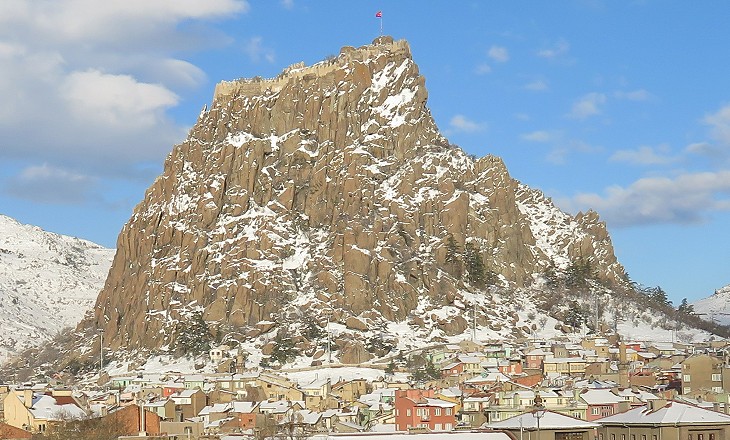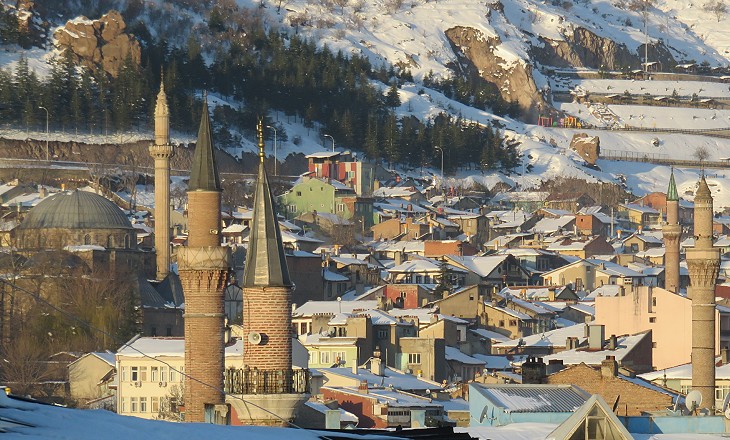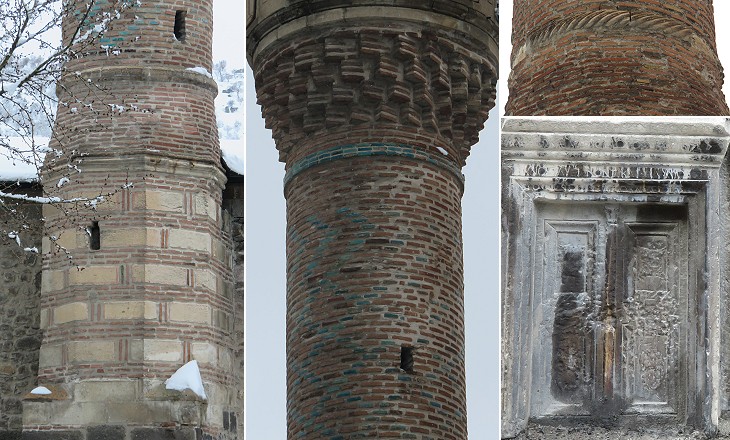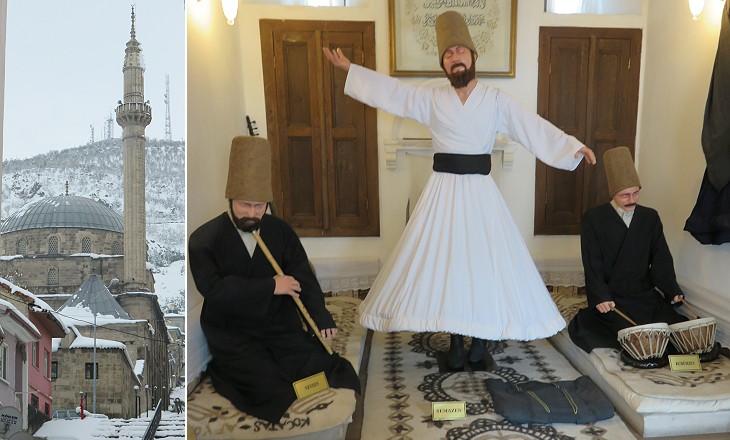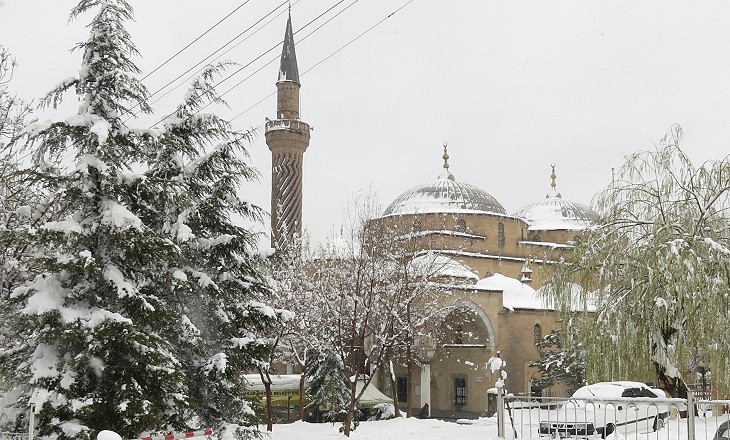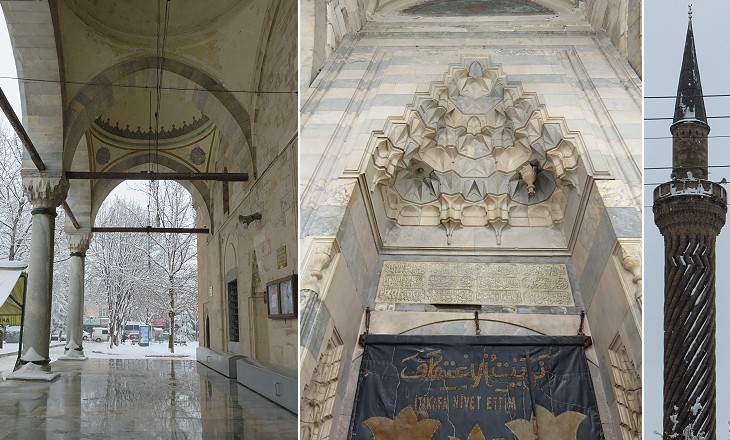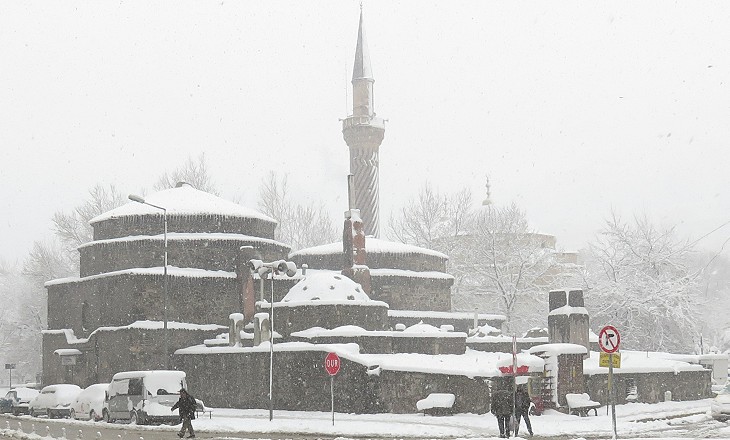  What's New! Detailed Sitemap All images © by Roberto Piperno, owner of the domain. Write to romapip@quipo.it. Text edited by Rosamie Moore. Page added in June 2015. |
  - Afyonkarahisar - page two - Afyonkarahisar - page two(Heroon at Sagalassos) You may wish to read an introductory page to this section or page one first.
The rock is a sort of bastard brown granite. It is of a black hue from which the town is called. It is so very steep that it would be impregnable if supplied with provisions and water. The town is near three miles in circumference. Richard Pococke - A Description of the East, and Some Other Countries - 1745 I halted here this day and ascended to the summit of the Castle rock by a steep and difficult path leading up the narrow crevice of its almost perpendicular sides, which were well defended by walls and numerous towers. The rock itself consists of red trachyte (an igneous volcanic rock) containing large crystals of glassy feldspar (a rock which does not include metals and is used in glassmaking) . William Hamilton - Researches in Asia Minor, Pontus and Armenia - 1842
On the almost pointed summit were the ruins of a castle with battlements and embrasures, but nothing to denote the existence of an ancient Acropolis. (..) I have omitted to mention that when on the summit of the Castle rock I found my compass completely put out by some strong local attraction and I remarked that when I placed it on the rock its variation was several points more to the west than when I held it in my hand and can only suppose it to have been occasioned by a large proportion of iron in the volcanic rock. W. Hamilton Today the ascent to the castle is not easier than it was for Hamilton, because of 800 steps which on a frosty day can be rather dangerous to climb. The walls and embrasures of the castle show evidence of a perhaps excessive modern restoration.
It is a great thoroughfare; has much trade and good shops provided with all sorts of things being in a plentiful country and many caravans pass through it. It is the residence of a pasha. R. Pococke Soon after eleven we reached the town which had a gay and busy look from the bustle which was going on and everything told us we had at length reached the high road from Constantinople and Smyrna to Syria. A long ride through the bazaars and crowded streets brought us to our konak (large house, but also place where one stays overnight) in a clean Armenian house. W. Hamilton
In the XIth century the Seljuks conquered most of the Anatolian tableland. Their state was known in Europe as the Sultanate of Iconium, after the Latin name of Konya, its capital, but Muslims called it Sultanate of Rum, because it was established on territories of the Roman Empire. In 1272-77 they built Ulu Camii, where all male Muslims of the town gathered on Fridays. It has been much renovated since its construction, but its prayer hall retains some of its many wooden pillars. The minaret show traces of a decoration made with small blue tiles which reached its peak at Sivas. Today Ulu Camii is rather remote from the centre of the town which is situated to the east of the rock and has very modern buildings and streets.
This big mosque in Ottoman style was built in the XIXth century on the site of a smaller one. It adjoined a tekke, a Dervish lodge. Writers of the past spiced their travel accounts up with funny stories they had heard of to give their readers some respite from ancient book quotations. Hassan's wife did not make his house very agreeable to him, nor did she enjoy his society as a good wife ought to do. Unhappily her affections were less strongly inclined towards Hassan (a shopkeeper) than to a holy Dervish whose melodious cry of "Hok hok hok" while seated day after day on the bench before her door had completely driven Hassan out of her heart. (..) Hassan came home from his shop in unusual gaiety (..) that he was determined to indulge in the luxury of a milk chalva (a dessert) which his wife was ordered to prepare. (..) The milk chalva was speedily prepared and a miscal (a measure of weight for gold) or two of opium was mixed up with the dainty dish and Hassan was soon in a profound sleep dreaming of customers and milk chalva. About one hundred yards off at the corner of four streets was a Tekkie or convent of Dervishes and connected with it one of those charitable places (a sebil) where through an iron grating a number of iron cups chained to the grating are always filled and refilled for the thirsty passenger. It was the duty of our Dervish to superintend this cup filling. It was to this place that poor Hassan was conveyed in the midst of his dreams and being laid down softly on the stone floor. His transformation into a Dervish quickly took place by being divested of his benish (a long-sleeved coat of woollen cloth) and turban and enveloped in the long ample white felt robe of the Dervish with his girdle, in which hung his horn, belted round his waist and the sugar loaf white felt cap substituted for the turban. The transformation completed, the Dervish returned to the house and so perfect was the resemblance that the servants readily admitted him as their old master. (..) The door (of Hassan's shop) was opened by the Dervish himself whom Hassan was astonished to see in his own clothes and which at once told all the story. He began by abusing him, but the servants were so fully convinced that the Dervish was their master and Hassan the impostor, that they readily obeyed the orders of their mistress to give him a bastinado (a beating with a stick). Francis Vyvyan Jago Arundell - Discoveries in Asia Minor - 1834
The Sultanate of Rum eventually split into a number of smaller states and Afyonkarahisar became part of a principality having Kutahya as its capital. In 1392 the Ottomans seized the town, but this expansion of their territories was challenged by the Karamanids, rulers of a large principality having Karaman as its capital. Gedik Ahmet Pacha, general and admiral of Sultan Mehmet II, defeated the Karamanids and in 1472 he celebrated his victory by building a kulliye, a complex of religious buildings which included an imaret, a soup kitchen for the poor, in the southern part of Afyonkarahisar.
There are in the city ten mosques; one of them is a noble building with a portico before it, the whole being covered with domes. R. Pococke The design of this mosque was based on the traditional pattern developed at Bursa, the first Ottoman capital. It was characterized by the presence of twin domes covering the prayer hall, which was therefore rectangular. Its length was greater than its width, an unusual layout because prayer halls were traditionally square or their width exceeded their length (as it occurs in the Great Mosques of Damascus and Kairouan).
The image used as background for this page shows the top of the castle during a snowstorm. Return to page one. Introductory page Sagalassos Isparta Egirdir Kutahya Map of Turkey with all the locations covered in this website  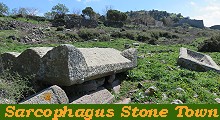 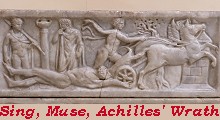 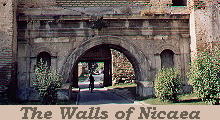 |
